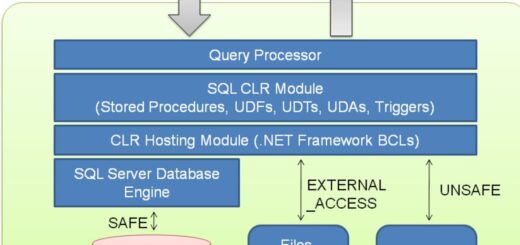Dark Side of Deepfakes: Detect and Mitigate the Risks
Dark Side of Deepfakes, Deepfakes have taken the world by storm, leaving many in the dark about their authenticity and intent.
These highly realistic, manipulated videos and audio clips have sparked a heated debate about their implications on society.
While deepfakes offer a plethora of creative and entertainment possibilities, they also pose significant risks, including spreading misinformation, compromising security, and threatening social harmony.
Dark Side of Deepfakes: Detect and Mitigate the Risks
In this article, we will delve into the world of deepfakes, exploring the methods used to detect and mitigate these risks, as well as discussing the pressing ethical concerns and potential misuse.
What are Dark Side of Deepfakes?
Before we delve into the world of deepfake detection, let’s first understand what deepfakes are.
The term “deepfake” refers to a type of AI-generated content, specifically videos and audio clips, created using deep learning techniques and neural networks.
These manipulated media items can range from simple audio or video manipulations to highly realistic, photorealistic creations, making it virtually impossible to distinguish them from authentic content.
The Rise of Deepfakes
Deepfakes have been around for a few years now, but it’s only in recent times that they have gained mainstream attention.
The rise of deepfakes is largely attributed to advancements in AI, machine learning, and deep learning technologies.
With the increasing availability of computing power, data storage, and sophisticated algorithms, creating high-quality deepfakes has become an accessible task.
Why Detect Deepfakes?
The risks associated with deepfakes are multifaceted and far-reaching. Here are some reasons why detecting deepfakes is crucial:
- Spread of Misinformation: Deepfakes can be used to create convincing, false narratives that can spread quickly online, potentially leading to social unrest, panic, or even violent consequences.
- Security Risks: Manipulated audio or video recordings can compromise national security by creating convincing fake intelligence, compromising confidential information, or impersonating government officials.
- Social Harmony: Deepfakes can be used to create embarrassing or damaging content about individuals, potentially leading to social isolation, harassment, or even physical harm.
- Election Interference: Deepfakes can be used to influence elections by creating convincing, but fake, campaign advertisements or speeches.
Methods to Detect and Mitigate Deepfakes
Fortunately, the tech community has been actively working on developing methods to detect and mitigate deepfakes. Here are some of the most promising approaches:
- Digital Watermarking: Digital watermarking involves embedding a unique identifier or signature into the media content, making it identifiable as authentic. This method can be used to verify the authenticity of media content.
- Forensic Analysis: Forensic analysis involves examining the media content for inconsistencies, such as pixelation, compression artifacts, or unusual lighting conditions.
- Machine Learning-Based Detection: Machine learning-based detection involves training algorithms to recognize patterns and anomalies in media content, which can help identify deepfakes.
- Audio/Video Fingerprinting: Audio/video fingerprinting involves analyzing the unique acoustic or visual characteristics of media content, which can help identify whether a clip is authentic or manipulated.
- Behavioral Analysis: Behavioral analysis involves analyzing the behavior of individuals who create and distribute deepfakes, which can help identify potential suspects.
The Role of AI in Deepfake Detection
AI plays a crucial role in deepfake detection, particularly in machine learning-based detection methods.
Here are some ways AI contributes to deepfake detection:
- Image and Audio Classification: AI-powered algorithms can be trained to classify images and audio recordings as authentic or manipulated.
- Object Detection: AI-powered object detection algorithms can identify inconsistencies in media content, such as missing or distorted objects.
- Video Segmentation: AI-powered video segmentation algorithms can analyze video content and detect anomalies such as mismatched audio or video.
Addressing Ethical Concerns and Misuse
While deepfake detection is crucial, it’s equally important to address the ethical concerns and potential misuse of deepfakes.
Here are some pressing concerns:
- Privacy: Deepfakes can compromise individual privacy by creating embarrassing or damaging content without consent.
- Misinformation: Deepfakes can spread misinformation and propaganda, potentially leading to social unrest or violence.
- Bias: Deepfakes can perpetuate bias and stereotypes, reinforcing existing prejudices and social divisions.
The Future of Deepfake Detection
As deepfakes continue to evolve, so do the methods to detect and mitigate them. The future of deepfake detection holds much promise, with ongoing research and development of new technologies and techniques. Some of the most exciting advancements include:
- Advances in AI: Continued advancements in AI will enable more sophisticated deepfake detection methods, including improved image and audio classification, object detection, and video segmentation.
- Quantum Computing: Quantum computing has the potential to revolutionize deepfake detection by enabling faster and more efficient processing of complex data.
- Multimodal Fusion: Multimodal fusion involves combining multiple data modalities, such as video, audio, and text, to create a more comprehensive deepfake detection system.
Conclusion
Deepfakes pose significant risks to society, but fortunately, the tech community has been actively working on developing methods to detect and mitigate them.
By leveraging AI, digital watermarking, forensic analysis, machine learning-based detection, and behavioral analysis, we can stay one step ahead of deepfakes.
However, it’s equally important to address the ethical concerns and potential misuse of deepfakes, ensuring that we prioritize individual privacy, combat misinformation, and promote social harmony.
As we move forward, we must continue to innovate and develop new technologies and techniques to detect and mitigate deepfakes, safeguarding our digital world and ensuring that we maintain trust in the authenticity of media content.
Impact of Data Science on Our Future » FINNSTATS





